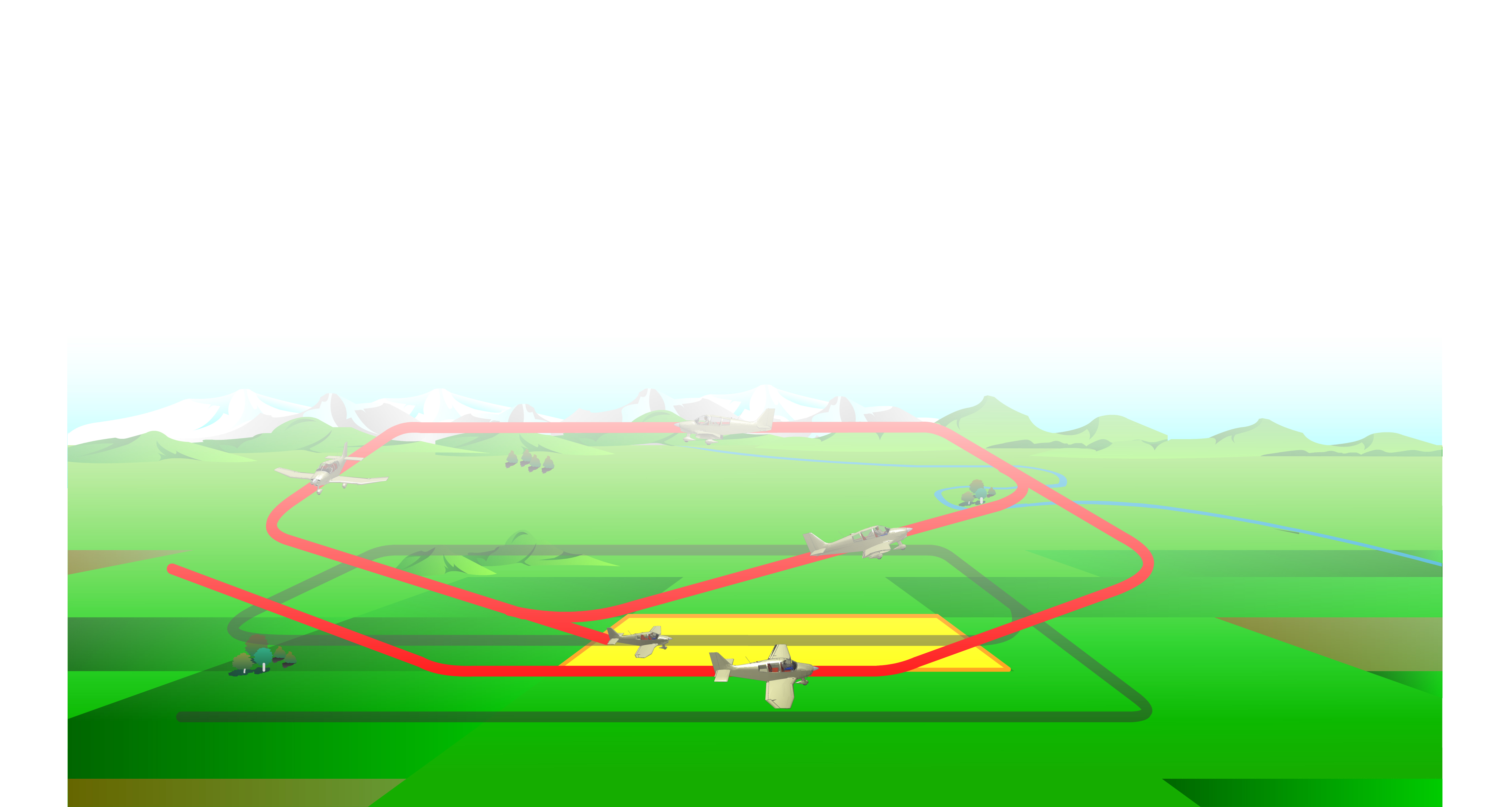
Summary: Precautionary Landing
Chapter 17.4
BRIEFING Before the Flight

Discussion of the reasons that may lead to a precautionary landing:
minimum WX conditions for training:
- Cloud base > 1000 ft
- Visibility > 3 km
- Time to twilight > 60 min
1. Is there an airfield available in the area?

if not:
2. Choosing an appropriate landing field / FIELD SEARCH
- determine wind direction
- size and shape of the possible landing field
- surface and slope of terrain
- identify and locate obstacles (buildings, power lines, trees, rocks, etc.)
- determine the approach circuit
3. АPPROACH CHECK

set PRECAUTIONARY CONFIGURATION (INIT APP CONFIGURATION)
- power reduction to reference value
- extend the flaps to the approach position
- trim the airplane
4. Overflight at 500 ft AGL

- determine wind direction
- size and shape of the possible landing field
- surface and slope of the terrain
- identify and locate obstacles (buildings, power lines, trees, rocks, etc.)
If the approach and / or the surface of the terrain appear inappropriate, look for another terrain and examine it according to the same criteria.
5. Overflight at 200 Ft AGL

to the right of the possible landing field, try to determine:
- wind direction
- size and shape of the possible landing field
- surface and slope of the terrain
- identify and locate obstacles (buildings, power lines, trees, rocks, etc.)
If the approach and / or the surface of the terrain appear inappropriate, look for another terrain and examine it according to the same criteria.
6. Approach

with SHORT / SOFT FIELD PROCEDURE according to AFM, LANDING CHECK.
7. Landing

In general, during the precautionary landing training, you will not land, you will perform a GO-AROUND high.
8. After the Landing

The procedures are described in Chapter 16 (EMERGENCY LANDING).